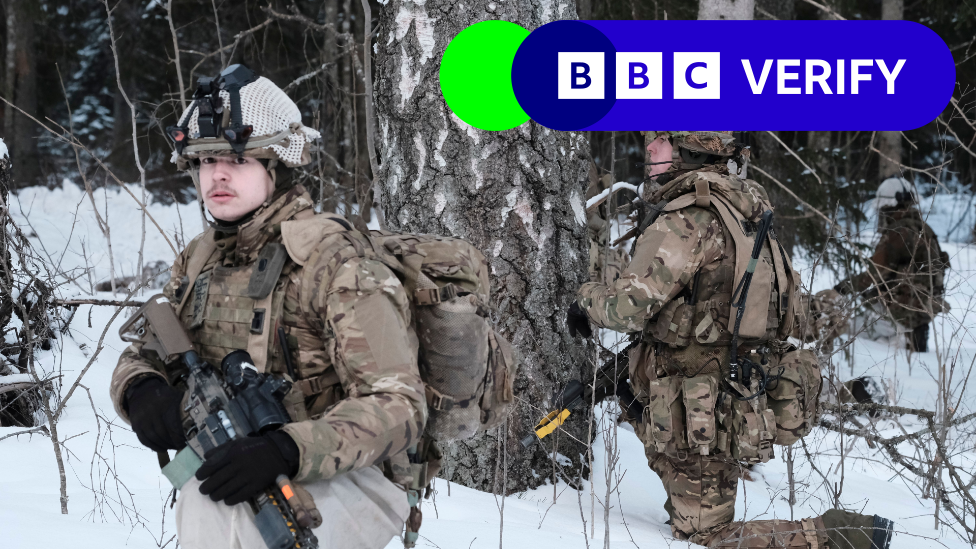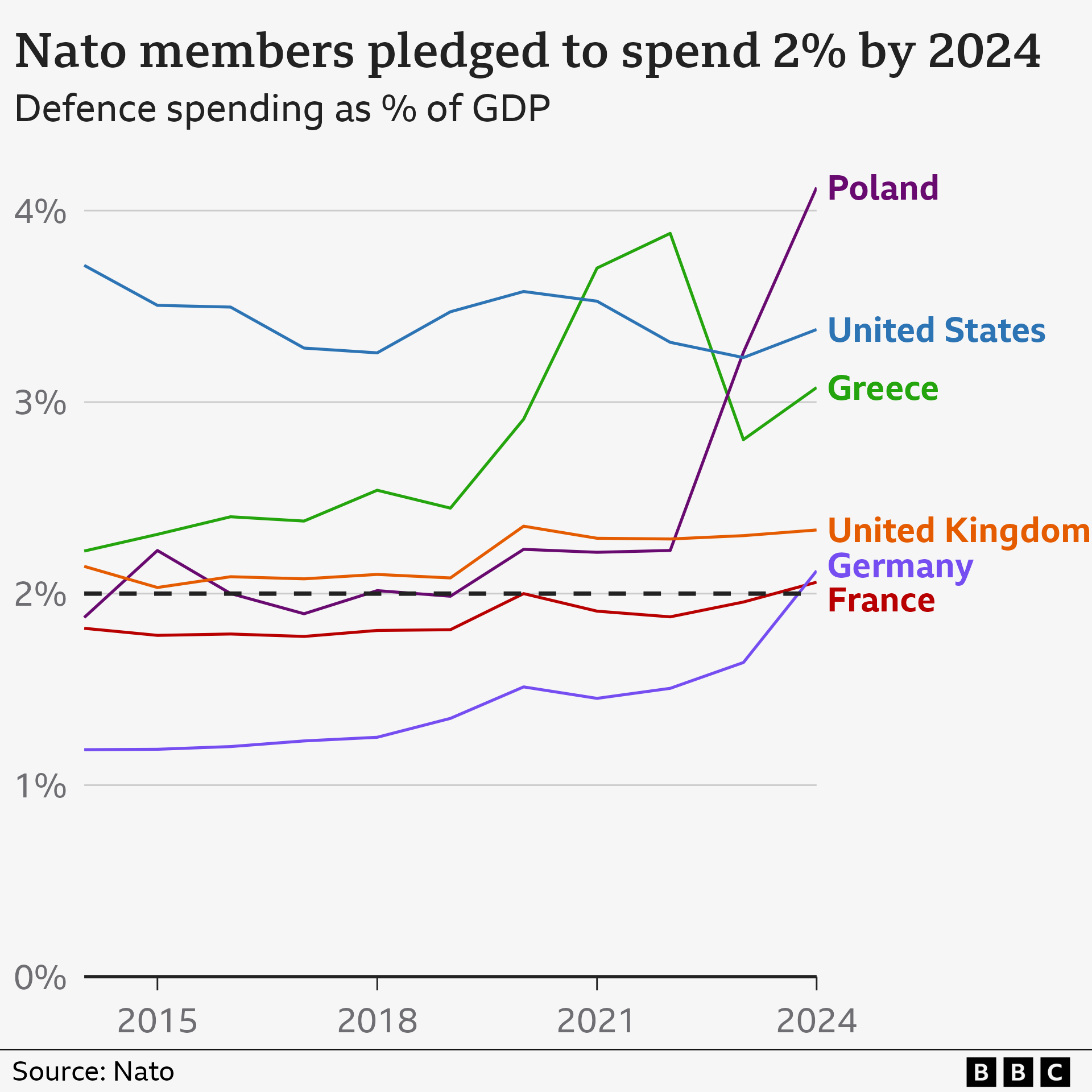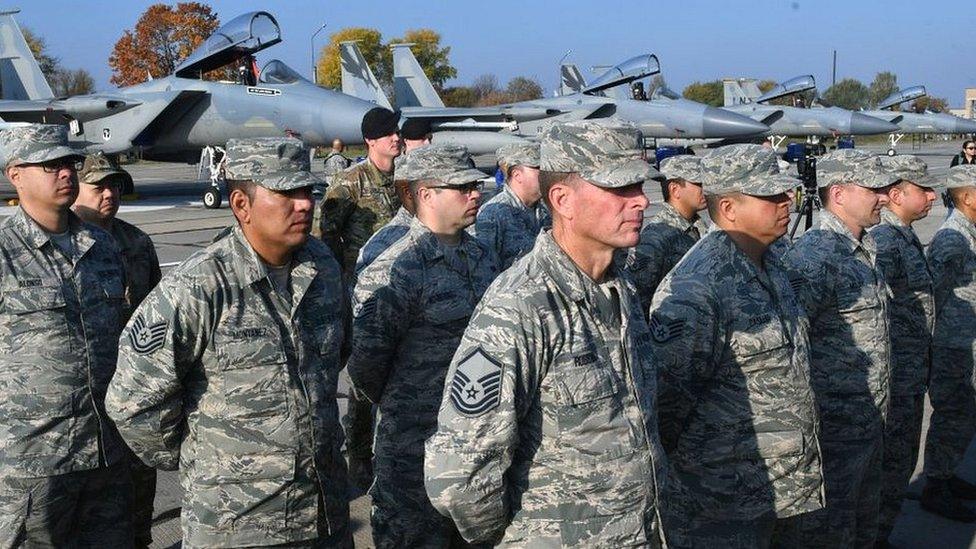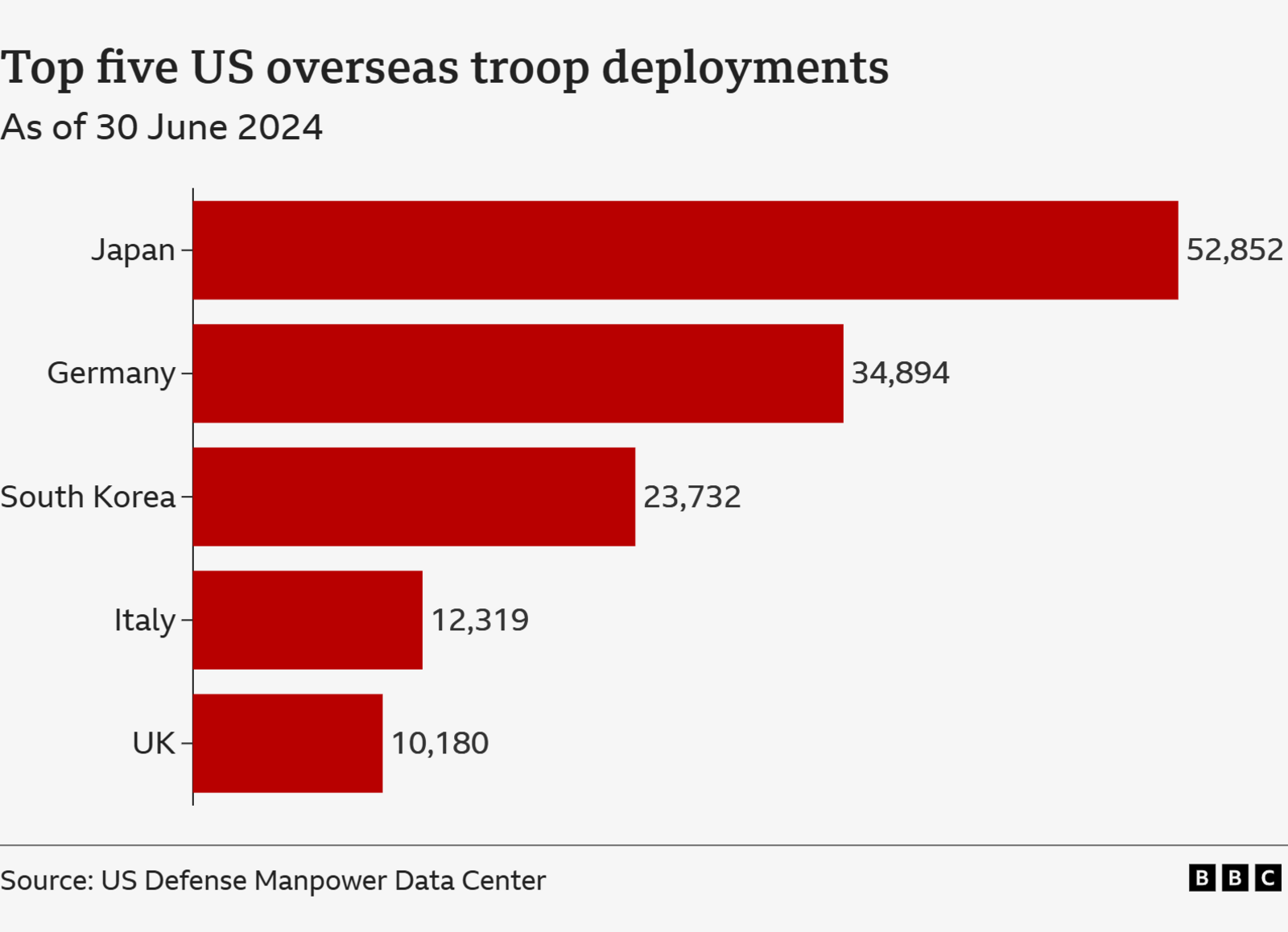How much do Nato members spend on defence?
- Published

The head of Nato, Mark Rutte, has told BBC News that Nato members will have to spend "considerably more than 3%" of the value of their economies on defence.
In an interview with BBC News on 14 February 2025 he said the process of coming up with a new target would conclude in April or May.
Under the previous target, the members of the military alliance pledged to spend at least 2% of GDP on defence per year by 2024. Twenty-three of the 32 members are expected to have achieved that.
The US has called for its Nato allies to spend 5%.
Which countries spend most on defence?
According to Nato estimates, external for 2024, made in June 2024, Poland was expected to be the top military spender measured as a share of its economy, for the second year running.
It's forecast to spend 4.1% of gross domestic product (GDP) - the total value of goods and services produced.
Estonia was in second place at 3.4% with the US in third place at 3.4%, which is about the same level as it has been spending for the last decade.
The UK came ninth on the list with 2.3%. The government has committed to increasing that to 2.5% but has not said when this will happen.
The average for Nato members in Europe and Canada is estimated at 2.0%.
Nato is expected to publish fresh estimates in March 2025 of how much members spent on defence in 2024.

The US is a global superpower, with military commitments around the world, not just to Nato. It had GDP equal to all the rest of the members of Nato in 2024, and its spending on defence is two thirds of the Nato total.
Defence spending by European Nato members and Canada has increased over the last 10 years.
Which countries are increasing their defence budgets?
The current target for European Nato members of 2% of GDP on defence by 2024 was agreed in 2014.
In that year only three countries (the US, UK and Greece) were spending more than 2% on defence.

Nato members also pledged that by 2024 at least 20% of their defence expenditure should go on acquiring and developing military equipment.
Shashank Joshi, defence editor of The Economist told BBC News on 9 July 2024 that the reason for that target is so countries are "not just wasting it all on pensions or something that isn't directly contributing to combat power".
In 2024, all Nato members except Belgium and Canada were expected to achieve that.

US personnel taking part in a Nato exercise in Ukraine
What about the cost of running Nato?
Nato's annual budget and programmes come to about €3.8bn (£3.2bn or $4.1bn) overall, and there's an agreed cost-sharing formula to pay for the running of things such as:, external
civilian staff and administrative costs of Nato headquarters
joint operations, strategic commands, radar and early warning systems, training and liaison
defence communications systems, airfields, harbours and fuel supplies
The cost sharing is based on national income.
The three biggest contributors to this are the US and Germany at 16% and the UK at 11%.
The US used to pay more than 22% of these running costs.
But a new payment formula was agreed in 2019 to address complaints by the first Trump administration about the burden to the US of supporting the alliance.
What else does the US do for Nato?
The US has more than 100,000 troops deployed across Europe, external.
Some US personnel based in Europe, external support non-Nato operations and US military numbers fluctuate as forces are rotated in and out of Europe.
Germany currently hosts by far the largest number of US forces in Europe, followed by Italy and the UK.
However, the biggest single overseas deployment of US personnel is not in a Nato member state at all. It is in Japan, where the US maintains more than 50,000 troops.

US forces also have a significant presence in the Middle East and the Gulf, although exact figures are not always disclosed and some deployments are only temporary.
Additional reporting by Thomas Spencer
Update 18 February: This article has been updated to reflect new figures and reporting.
Correction 5 March: An earlier version of this article incorrectly stated the date of the BBC News interview with Mark Rutte. It was in February 2025 not 2024.
